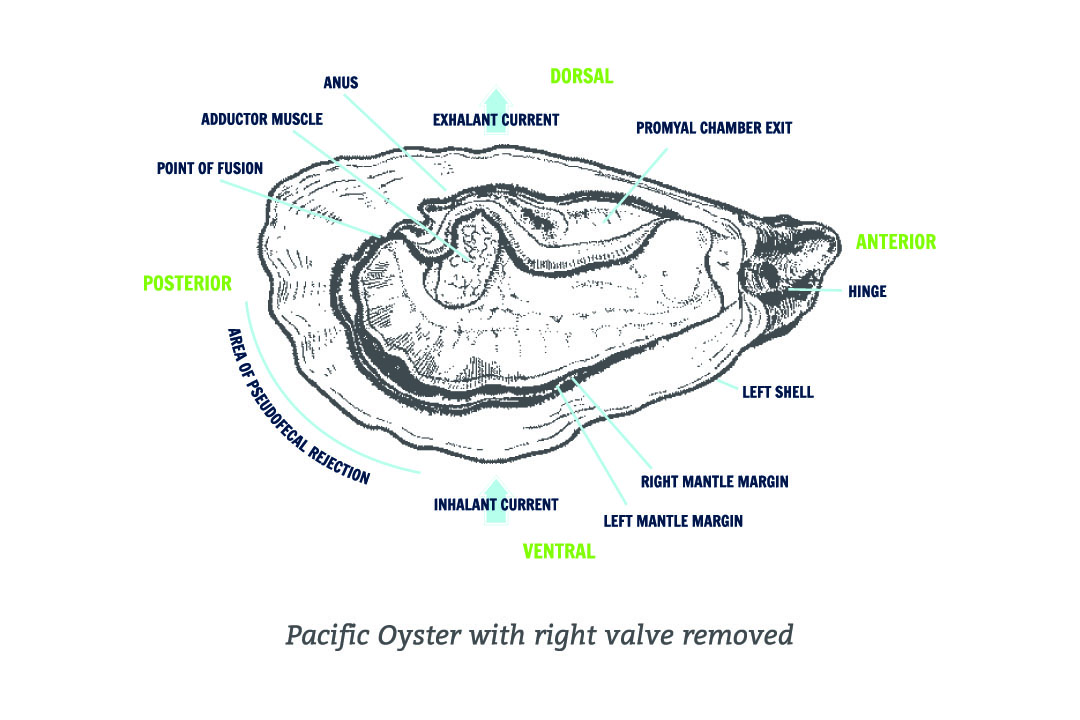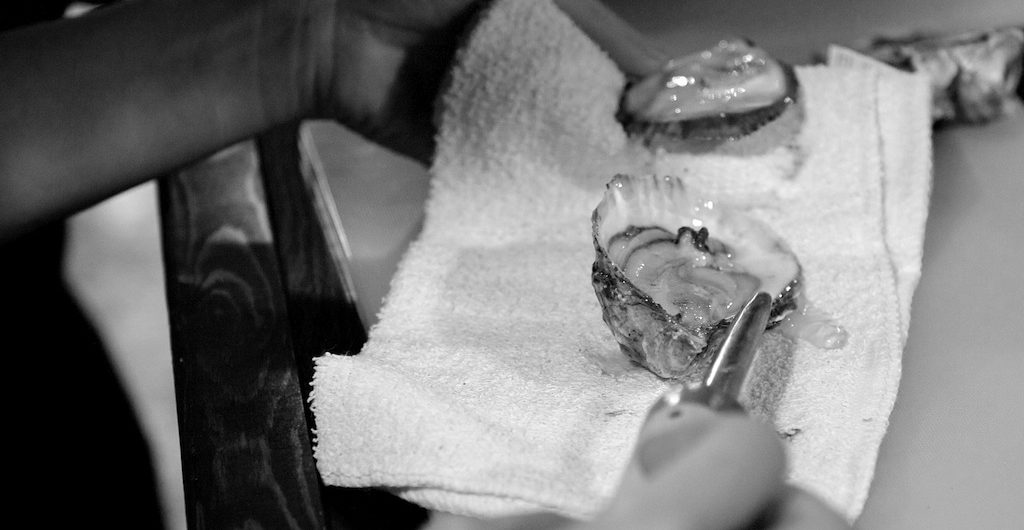If you’ve never shucked an oyster before, you might look at this as an exercise in frustration or potential injury. Rest assured, this isn’t rocket science, and with a few pointers and a good oyster knife, you’ll be shucking like a pro in no time.
There are several ways to shuck an oyster, but the best way is the one that gets the oyster open quickly and safely. For most of us, that means the hinge shucking method.

Let’s inspect the anatomy of an oyster for a moment. This is a top-down view of an oyster with the top shell removed. The top shell is the flat side of the oyster, as opposed to the bottom shell which is cupped. Usually, it’s pretty obvious which side of the oyster is flat and which side is cupped, but not always. If you have any doubts, move on to the next step, which is to find the oyster hinge. The hinge is the pointed, V-shaped end of the oyster, pictured in the illustration above on the right side. You’ll see a distinct, dark crevice at the hinge, and you want to position the oyster so that the hinge and top shell are facing up. Now that you’ve located hinge, here’s how to shuck the oyster.
- Wrap the rounded end of the oyster with a kitchen towel, leaving the hinge exposed. Place the oyster on a sturdy table or another flat surface.
- Holding the towel-wrapped end with your non-dominant hand, insert the tip of your knife into the crevice at the hinge, and twist your wrist as if you’re turning a key or a screwdriver, not in a scooping motion. Be sure to always point your knife downward, toward the table, not at your other hand. The key is steady, firm pressure, but don’t use your full strength or you may end up plunging the knife into the oyster’s belly, or your hand. If you see small amounts of liquid seeping out from the oyster hinge, it means that you are quite close to releasing the hinge, so just keep twisting. When you break through the oyster hinge, you’ll feel a light pop and the top shell will become loose.
- Holding the knife blade flat and parallel to the top shell, slide the knife toward the top-right side of the oyster to slice through the adductor muscle. At this point, the top shell can be removed and you can see the oyster meat, quivering in its liqueur.
- There’s only one more step before you can slurp your oyster. Take your knife, give it a quick wipe, and sweep it against the bottom of the shell, directly underneath from where the adductor muscle was attached. This detaches the oyster meat completely from the shell. Tip the oyster into your mouth and enjoy. Repeat this process with a new oyster until you’ve run out, or until your friends/significant other take on the duty of shucking.
If you are a professional shucker or have saltwater in your veins, you might try the side shucking method. With this technique, you go straight for the jugular, er, adductor muscle and sever it from the side of the oyster. This is faster than going through the oyster hinge, and can be done while holding the oyster mid-air, without a table. The trick is to choke up on the knife blade and hold it a couple of inches from the end, not at the handle. As you can imagine, this method is faster than the hinge method because you are entering the oyster shell at its point of attachment. If you’d like to impress your friends or compete in a speed shucking contest, this is the way to do it. Everyone else, stick to the hinge shucking method for the benefit and safety of your hand.
